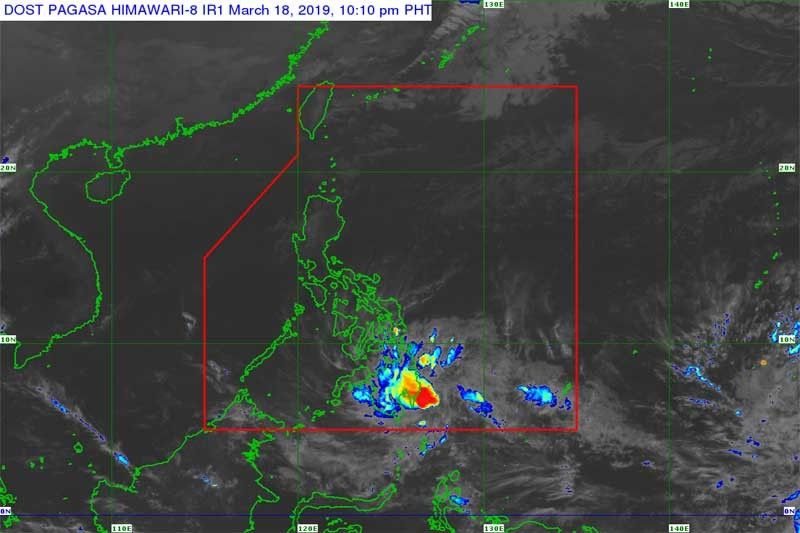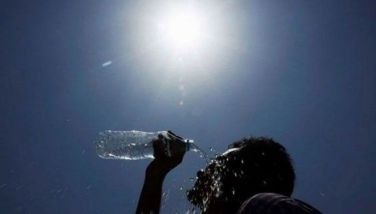Tropical Depression Chedeng to make landfall, bring rain

MANILA, Philippines — Tropical Depression Chedeng will continue to bring much-needed rains to most parts of Mindanao today, the Philippine Atmospheric, Geophysical and Astronomical Services Administration (PAGASA) said yesterday.
Chedeng was forecast to make landfall over the southeastern coast of Davao Oriental or the eastern coast of Davao Occidental this morning.
It will continue to bring scattered to at times widespread moderate to heavy rains over most parts of Mindanao, especially over the regions of Davao, Soccsksargen, Bangsamoro and Zamboanga Peninsula.
The tropical depression is expected to weaken into a low pressure area after landfall but will continue to dump rains over the region, according to PAGASA weather specialist Benison Estareja.
PAGASA deputy administrator for research and development Flaviana Hilario said Mindanao has been receiving “way below normal” or a 60-percent reduction in rainfall in the past two months due to the weak El Niño.
PAGASA deputy administrator for operations and services Jun Dalida said the rains that Chedeng would bring is a welcome development as this could replenish dams in the region.
As of 4 p.m. yesterday, the center of Chedeng was located at 285 kilometers east-southeast of Davao City, packing winds of 45 kilometers per hour near the center and gustiness of up to 60 kph.
It was moving west at 15 kph.
As of 5 p.m., tropical cyclone warning signal no. 1 was hoisted over Davao Oriental, Compostela Valley, Davao del Sur, Davao City, General Santos City, Davao Occidental, southern portion of Davao del Norte, including Samal Island, eastern portion of North Cotabato, eastern portion of South Cotabato, eastern portion of Sarangani and eastern portion of Sultan Kudarat.
Hilario said Chedeng’s rains were expected over northern Mindanao and southern Visayas.
On Sunday, PAGASA climate monitoring and prediction section chief Ana Liza Solis said Chedeng was not bringing significant rains over northwestern Mindanao, which is the region hit by dry spell and drought conditions.
Meanwhile, Hilario said they are not expecting rains to affect Luzon, including Metro Manila, in the next three weeks.
‘Severe impact’
Hilario also warned the public that the effects of El Niño, a weather pattern associated with below normal rainfall, would become “severe” in the coming months.
“Air temperatures are now increasing as we approach the dry season and the impacts of El Niño are expected to become severe,” she said at a press conference.
Hilario added that El Niño could also delay the onset of the rainy season in areas under Type I climate, which includes Metro Manila.
El Niño, which has been affecting almost the entire Philippines, is expected to last until June, according to the PAGASA executive, adding that the weather phenomenon could also have lingering effects.
- Latest
- Trending




























